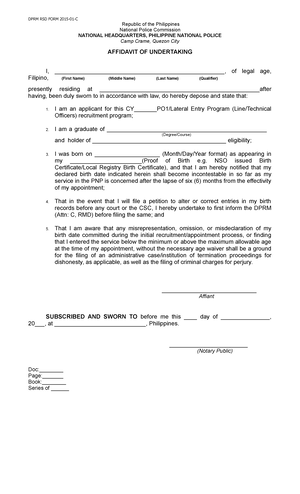- Information
- AI Chat
This is a Premium Document. Some documents on Studocu are Premium. Upgrade to Premium to unlock it.
Was this document helpful?
This is a Premium Document. Some documents on Studocu are Premium. Upgrade to Premium to unlock it.
People Vs. Jennings - Case about Fingerprints
Course: BSCriminology (PBSCRIM 013)
50 Documents
Students shared 50 documents in this course
University: University of La Salette
Was this document helpful?
This is a preview
Do you want full access? Go Premium and unlock all 2 pages
Access to all documents
Get Unlimited Downloads
Improve your grades
Already Premium?

People vs. Jennings
252 lll. 534, 96 NE (1911)
Supreme Court of Illinois
FACTS: On the night of September 19, 1910, Clarence B. Hiller...encountered an intruder [in
his home] and a struggle ensued. Both fell to the foot of the stairway and Mr. Hiller was shot
twice. He died moments later. Mrs. Hiller screamed and the intruder fled...[Luckily,] the [outside
veranda] had recently been painted and it was here that the imprint of four fingers of someone's
left hand was found imbedded in the fresh paint...At about 2:38 a.m. Thomas Jennings was
spotted by police and was questioned as to what he was doing out so late...They searched him
and discovered he was carrying a loaded revolver...Later, the police found out that Jennings had
just been released on parole in August 1910 after serving a sentence for burglary. His fingerprint
card was on file and was compared to the prints lifted at the Hiller household. The officers took
Jennings to the station on the street cars, and when examined there, sand was found in his shoes.
Jennings, when arrested, first told the officers that he lived at 1244 State street, Chicago, and
later 577 Twelfth street; that he left for Harvey about seven or eight o’clock the evening before to
visit friends, and that when he started to return from Harvey, about twelve o’clock, not finding a
street car, he had walked back to that point.
ISSUE:
Is there sufficient evidence to support the jury's finding that Jennings was guilty of first-degree
murder on each of the three theories advanced by the prosecution - murder by poison, murder by
torture, and premeditated murder?
RULING/HELD: Four fingerprint experts at Jennings' trial declared the fingerprints from the
crime scene were a conclusive match to Jennings own prints. Based on this evidence, Jennings
was convicted of murder on February 1, 1911. It was shortly after this event that fingerprint
science spread to all the major American cities across the nation. “All of these witnesses testified
at more or less length as to the basis of the system and the various markings found on the human
hand, stating that they were classified from the various forms of markings, including those
known as “arches,” “loops,” “whorls” and “deltas.” It was further insisted on oral argument and
in the briefs of the plaintiff in error that the evidence is not sufficient to support the verdict.
However, in view of the character of this case and the sentence pronounced we deem it not
improper to say that all the incriminating proof points to the accused. There is absolutely nothing
in the record tending to show that the crime was committed by anyone else. Jennings was
convicted of Murder on February 01, 1911.
https://www.google.com/url?
sa=t&source=web&rct=j&url=https://law.justia.com/cases/illinois/supreme-court/1957/33937-
Why is this page out of focus?
This is a Premium document. Become Premium to read the whole document.

